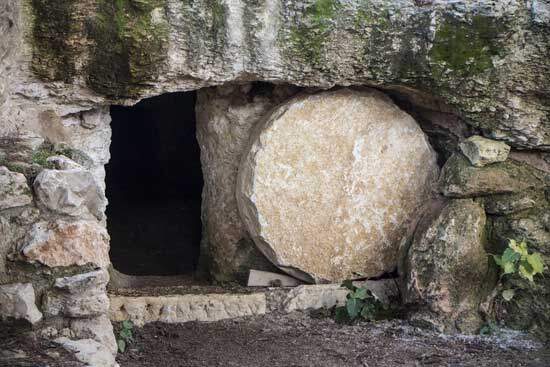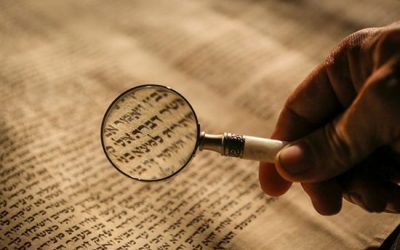 John, the brother of James, was likely the youngest of the 12 disciples. And yet he was present for the most pivotal events in Jesus Christ’s ministry, some of which only a few of the disciples witnessed.
John, the brother of James, was likely the youngest of the 12 disciples. And yet he was present for the most pivotal events in Jesus Christ’s ministry, some of which only a few of the disciples witnessed.
Overall, his time with Jesus prepared him to become a prominent leader and writer in the early Christian church.
There’s a lot packed into the life of this apostle, so let’s go through his life step by step:
- John’s beginnings
- The calling of John
- John’s discipleship
- John’s contributions as an apostle
- The teachings of John
- John’s legacy
We’ll start with what we know from before he became a disciple of Jesus.
John’s beginnings
The New Testament tells us that John was the son of Zebedee and the brother of the disciple James (Luke 5:10).
John is typically thought to be the youngest of the disciples of Jesus.1 John is always mentioned as the brother of James,2 and according to the customs of his time, the older sibling would be mentioned first.
Like the other disciples, James and John were Jewish.3 They grew up in Galilee, a northern region of Israel4 that had long since been conquered by the Empire of Rome.
The Galileans, like many Jews, were unhappy with Roman rule.5 After a long history of political unrest and revolts,6 most Jews relied on the hope of the promised Messiah, waiting for Him to come and deliver them from Roman occupation.7
In the meantime, John and James both worked as fishermen in Capernaum (Matthew 4:13, 18). There, they fished alongside workmen their father had hired (Mark 1:20) and other fishermen, like the brothers Simon Peter and Andrew (Luke 5:10), who also became disciples.
What these pairs of brothers hadn’t yet realized was that their grueling work would one day lead them to meet the Messiah they had heard about.
The calling of John

Image by Harrison Haines
The day Jesus called John to be His disciple started off like any other.
John and his brother were on their fishing boat when they were called by their fishing partners, Simon Peter and Andrew, to help them haul in their nets (Matthew 4:18-21; Luke 5:1-11).
They needed John and his brother’s help because they had caught a lot of fish—so much so that the boat was starting to sink from the weight as they tried to pull in the nets (Luke 5:7)!
This was especially noteworthy because Peter and Andrew had been fishing all day without a single catch. It was only when a man named Jesus instructed them to cast their nets in a different spot that they caught more fish than they ever could have imagined.
Because of this miracle, Peter realized that the man who helped them was no ordinary man, but the Messiah himself (Luke 5:8).
It was then that Jesus called Peter and Andrew to become His disciples. He told them they would no longer be catching fish, but “catching people” (Luke 5:10, CSB). From then on, their job was to teach others about Jesus Christ (Mark 1:17).
When Jesus turned to John and James, He asked them to follow Him too (Matthew 4:21). Just like Peter and Andrew, John and his brother were quick to agree. And in the end, they left behind everything they had to follow after Jesus (Matthew 4:21-22).
Joining the disciples

Image by EKATERINA BOLOVTSOVA
In accepting Jesus’ call at the Sea of Galilee, John and his brother became some of Jesus’ first disciples.
Later on, Jesus would add more disciples to the group, selecting men of varying ages, classes, professions, and personalities.
These differences caused some of the disciples to clash with one another, especially where personalities were concerned.
And of the 12 disciples, Scripture hints that John and his brother had especially strong personalities.
They could be hasty and judgmental at times, prone to jumping to conclusions. They often had harsh words toward anyone they thought didn’t measure up to their standards. But even while they were quick to point fingers at others, they were slow to acknowledge their own flaws and shortcomings.
On one occasion, John rebuked a man for casting out demons in Jesus’ name, because this man wasn’t part of the 12 (Mark 9:38-41). Another time, he and James called Jesus to send fire down on a Samaritan village to punish them for rejecting Jesus (Luke 9:51-56).
But on both occasions, Jesus corrected John, calling him to seek out unity and peace instead of division and destruction (Mark 9:39-40; Luke 9:55-56). The brothers’ eagerness to punish who they believed to be wrong-doers might very well be the reason Jesus called them “Boanerges,” or “Sons of Thunder” (Mark 3:17).
They still had much to understand about what Jesus’ mission truly was.
It seems that they, like many Jews, were more focused on how Jesus could help them gain earthly victory—specifically over the Romans.
It’s the classic human tendency to dwell upon what’s currently happening to us in our own corners of the world, rather than thinking bigger.
Jesus’ ministry had much bigger plans—victory over sin, for all of humanity.
But they were so fixated on the idea of political authority that they supported their mother’s request to Jesus, that they be seated at His left and right hands when He ascended to His (earthly) throne (Mark 10:35-45; Matthew 20:20-28).
But over time, Jesus helped them understand what His kingdom was really like (Luke 9:25-28). He showed them that what mattered most in the kingdom of God wasn’t a person’s status, but the condition of their character.
Jesus reiterated this idea to the disciples throughout His time with them, teaching them how to value love and humility over selfishness and worldly gain.
Day by day, Jesus’ servant leadership helped the disciples develop the right focus and mindset, eventually preparing them for their roles as apostles.
And John was no exception.
In the time he spent with Jesus, John went from being known as “a son of Thunder” to “the disciple whom Jesus loved.”
John’s discipleship
Though Jesus loved all of His disciples, He was especially close to Peter, James, and John. These three have long been considered the “inner circle” of the 12 disciples.
For his part, John was so close to Jesus that he got to witness some of the most pivotal moments in Jesus’ ministry.
The healing of Jairus’ daughter
The disciples witnessed many miracles throughout Jesus’ ministry, but only John, James, and Peter were present for the resurrection of a synagogue’s leader’s daughter.
As Jesus and his disciples made their way to the dead child, the townspeople mocked Him, wondering what He could possibly do for her now that she was no longer alive.
“But when He had put them all outside, He took the father and the mother of the child, and those who were with Him, and entered where the child was lying. Then He took the child by the hand, and said to her, “Talitha, cumi,” which is translated, “Little girl, I say to you, arise.” Immediately the girl arose and walked, for she was twelve years of age. And they were overcome with great amazement” (Mark 5:40-42, NKJV).
This miracle gave John a glimpse of Jesus’ great power and compassion. But it was far from the last miraculous thing John would experience in the company of Jesus.
The Transfiguration
Upon a tall mountain, Jesus was praying even as His disciples were fast asleep (Luke 9:32).
But as He began to pray, He was transfigured, or became spiritually radiant with light. His face and clothes began to glow with light (Matthew 17:2-3).
Moses and Elijah then appeared to speak with Him about what He was about to undergo on the Cross (Luke 9:31).
As Jesus, Moses, and Elijah were talking, John and the others began to wake. They saw the glory of Jesus and recognized the men with Him, and were filled with fear (Luke 9: 32-33; Mark 9:4-6).
When Moses and Elijah had finished speaking with Jesus, a cloud appeared and took them away. At the same time, the disciples heard a voice speaking from the cloud, saying:
“This is My beloved Son. Hear Him!” (Luke 9:35, NKJV).
Though John was likely overwhelmed by the experience, like any of us would have been, he had been given the honor of hearing God’s voice. We can only imagine how much this must have strengthened his faith in Jesus.
The Last Supper
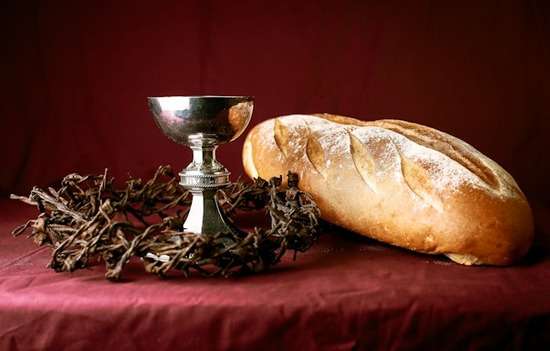
Photo by James Coleman on Unsplash
When it came time for the Last Supper, Jesus called John and Peter to prepare the Passover dinner for Him and the rest of the disciples (Luke 22:7-13).
Jesus knew this would be the last meal He would ever eat with His disciples, and He trusted John and Peter to set it up as He asked.
Jesus’ care for John is further emphasized by the idea that John is known as “John the beloved” or as “the disciple whom Jesus loved.”8
Though Scripture doesn’t specifically state in one sentence that John is the beloved disciple, verses at the end of the book of John identify the beloved disciple as the author of the book of John (John 21: 20-25), which is widely believed to be none other than the apostle John.9
If we take this to be true, that means that John was the one to sit beside Jesus and ask Him who would betray Him.
“Lying back on Jesus’ chest was one of His disciples, whom Jesus loved. So Simon Peter nodded to this disciple and said to him, ‘Tell us who it is of whom He is speaking.’ He then simply leaned back on Jesus’ chest and said to Him, ‘Lord, who is it?’” (John 13:23-25, NASB).
The fact that this disciple was able to lean on Jesus and speak to Him so frankly is further evidence that John, out of all the disciples, was especially close to Jesus.
The Garden of Gethsemane
It was John, James, and Peter that Jesus called to be with Him as He prayed in the Garden of Gethsemane (Matthew 26:37).
Though John and the others were eager to follow Jesus, they didn’t understand the importance of this occasion.
Jesus went to the garden to pray for God to give Him the strength He needed to fulfill His mission. He knew the pain and heartbreak that awaited Him on the Cross. The agonizing idea of being separated from His Heavenly Father actually caused Him to sweat blood (Luke 22:44).
And yet, in one of the darkest moments in Jesus’ life, John and the other disciples let Jesus down.
“Then He came to the disciples and found them sleeping, and said to Peter, ‘What! Could you not watch with Me one hour? Watch and pray, lest you enter into temptation. The spirit indeed is willing, but the flesh is weak’” (Matthew 26:40-41, NKJV).
But even after Jesus warned John and the others to stay awake, they fell asleep again moments later.
“And He came and found them asleep again, for their eyes were heavy. So He left them, went away again, and prayed the third time, saying the same words. Then He came to His disciples and said to them, ‘Are you still sleeping and resting? Behold, the hour is at hand, and the Son of Man is being betrayed into the hands of sinners. Rise, let us be going. See, My betrayer is at hand’” (Matthew 26:43-46, NKJV).
Like all of us, John suffered from human weakness. Without God, he was powerless to stay awake.
But even as John failed to pray by Jesus’ side in the Garden of Gethsemane, he later found the strength to stand by Him as He hung on the Cross.
Jesus’ crucifixion
Of all 12 disciples, John is the only one believed to be present for the crucifixion of Christ.
Just like Jesus had predicted, the other disciples had scattered when Jesus was captured (Matthew 26:31). Even Peter, one of Jesus’ closest disciples, had denied and abandoned Him (Matthew 26:69-75).
Only John, the disciple whom Jesus loved, stood by the Cross as Jesus died.
In the end, John remained loyal to Jesus, even agreeing to look after Jesus’ mother when He passed.
“When Jesus saw His mother and the disciple He loved standing there, He said to His mother, ‘Woman, here is your son.’ Then He said to the disciple, ‘Here is your mother.’ And from that hour the disciple took her into his own home” (John 19:26-27, CSB).
It’s difficult to imagine what John must have felt, watching his friend and Savior hanging on the Cross.
Fortunately, John wasn’t left with the heartbreak of Jesus’ passing for long. He was among the first disciples to learn of Jesus’ resurrection.
Jesus’ Resurrection
John was the first disciple to reach Jesus’ tomb after Mary Magdalene told him and Peter that the stone of the tomb had been rolled away (John 20:4).
But for all of his eagerness, he waited for Peter to arrive and inspect the tomb before he went in himself (John 20:5-8).
When Peter had confirmed that Jesus was gone, with only His grave clothes left behind, John concluded that Jesus had risen from the dead (John 20:6-8).
Perhaps being witness to the raising of Jarius’ daughter had led him to this conclusion.
Whatever the case, John’s time with Jesus surely helped him better understand what Jesus’ ministry was all about. And in the end, this, along with the way Jesus was able to transform John’s character, helped him become the leader the early church needed.
John’s contributions as an apostle
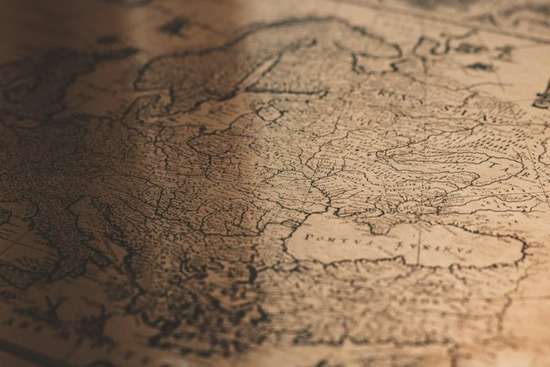
Photo by Jakob Braun on Unsplash
Shortly before Jesus returned to heaven at His ascension, He gave His disciples the commission that they go from country to country, telling others the blessed hope of the gospel message.
But it was quite the transformation for the disciples. They had to go from being students to teachers. For his part, John had to go from being the youngest disciple to becoming an apostle of an entirely new religious movement.
But Jesus didn’t leave them to figure it all out on their own. He sent the Holy Spirit to guide them.
The book of Acts tells us that the disciples received the Holy Spirit at Pentecost while they were in Jerusalem (Acts 1:2-5; 2:1-13).
Through the guidance of the Holy Spirit, John took an active role in church leadership, oftentimes working alongside Peter to:
- Perform miracles (Acts 3:1-10)
- Pray for the Holy Spirit’s guidance (Acts 8:14-15)
- Make administrative decisions (Acts 6:6-7)
- Preach the gospel message (Acts 3:11-26)
John became such an important leader that the Apostle Paul called him one of the pillars of the early Christian church (Galatians 2:9).
It was also during John’s time as an apostle that he was believed to have authored several books of the Bible.
As a matter of fact, many people credit him with writing the Gospel of John, the three epistles of John, and the book of Revelation.10
And the same fervor that earned him the “Son of Thunder” nickname eventually was applied to his ministry as an apostle. He was exiled on the island of Patmos for preaching about Jesus. But his captors couldn’t keep him from serving God. It was likely during this time that John wrote Revelation.11
It was through books like this that John was able to deliver theological and spiritual messages that would guide and encourage readers around the world even over a thousand years later.
The teachings of John
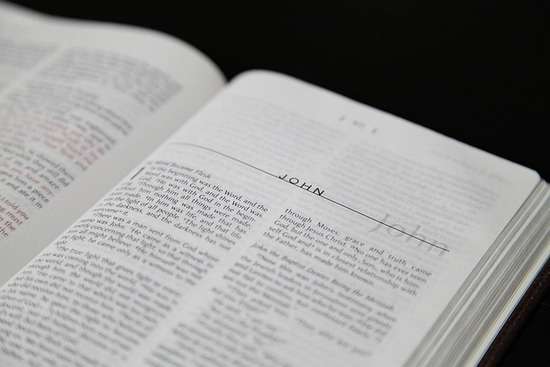
Photo by Jakob Braun on Unsplash
Through the three works of literature believed to be authored by John, we gain a unique perspective of Jesus and His ministry and purpose.
In the Gospel According to John, he offered his own up-close-and-personal perspective on the events surrounding Jesus’ life. He mentioned events other accounts had left out or not been able to witness, like the resurrection of Lazarus (John 11:38-44).
But while the Gospel of John was written as a biography of Jesus’ life and mission, the epistles of John were written as letters of counsel to early Christian believers. Altogether, they warn Christians not to follow after false teachers,12 and instead pursue the life God has called them to live—one motivated by love and compassion.13
Meanwhile, the book of Revelation presents an entirely different kind of work. While his other books focused on themes of discipleship and love, Revelation was his account of a prophetic vision he received. We get glimpses of the end times, providing more theological insight about what will happen in the last days right before Jesus returns at His Second Coming.
John’s writings also help us see how he matured as a disciple of Christ.
The Gospel of John gives us a look at his early growth as a disciple of Jesus, while his epistles demonstrate how he had grown influence to become a church leader.
And in the book of Revelation, his role had truly grown from a disciple to a prophet. God entrusted John with the task of recording what he was shown about how the Great Controversy began, what it did to our world, and Jesus’ incredible role in God’s promise of redeeming us and putting an end to sin forever.
All in all, John’s writings helped the church better understand the life of Jesus, what it means to be a disciple for Christ, and the ultimate plan Jesus has for His followers right up through the end of time.
John’s legacy
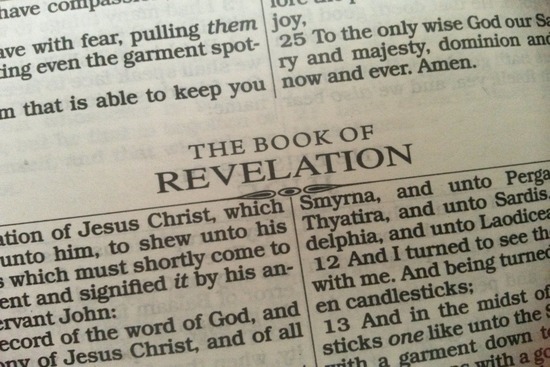
Image by James Nichols from Pixabay
Today, the apostle John is known for his role in developing the Christian church through the spiritual and theological teachings of his writings and the evangelistic work he did in spreading Christianity.
Though John was invested in Jesus’ ministry from the start, his story shows us just how much John grew in his relationship with Christ. His time with Jesus taught him how to be a compassionate and humble leader.
He had once hated Samaritans (Luke 9:51-56), but later ministered to them and prayed on their behalf (Acts 8:14-15).
He had once questioned Jesus about the signs of the end times (Mark 13:3, 29) only to later be given the responsibility of sharing the events of the end times with the world through the book of Revelation.
In the end, John’s story teaches us that Jesus was never looking for perfect disciples. He was looking for those who were willing.
John left behind his entire home, job, and family to follow Jesus. Like all of us, he had some character flaws and often made mistakes. But in the end, it was his willingness—to follow Jesus and to allow his character to be transformed—that led him to become John the Apostle and John the Revelator.
Want to learn more about Jesus’ disciples? Read all about
John’s big brother, James.
Fun Facts about the Apostle John:14
- Before they met Jesus, John and James worked alongside Simon Peter and Andrew as fishermen (Luke 5:10).
- John is believed to be the youngest disciple.
- John may have followed John the Baptist before he followed Jesus (John 1:35-40).
- Jesus called John and James “Sons of Thunder” (Mark 3:17).
- John refers to himself as the disciple Jesus loved (John 21: 20-25; John 13:23-25; John 19:26-27).
- Jesus asked John to take care of His mother, Mary, when He died on the cross (John 19:26-27).
- John is credited with writing the Gospel of John, the epistles of John, and the book of Revelation.
- John is believed to have written more of the Bible than any other disciple.
- According to tradition, John is the last disciple to die. And he’s the only one to die of natural causes.
- According to tradition, John was sentenced to be boiled in oil, although he survived without any injury.
- His mother is thought to be a woman named Salome. In one verse, she is referred to by name, and in another she is referred to as the Mother of Zebedee’s sons, making her the mother of James and John (Mark 15:40; Matthew 27:56).
Related pages
More Answers
Unveiling Mark: The Gospel Author’s Journey and Legacy
Let’s dive into the story of Mark, the writer behind the Gospel named after him in the New Testament. This post aims to make his life and work easier to understand, highlighting how his writing has deeply influenced what Christians believe about Jesus’ life and work.
Understanding Luke: The Beloved Physician, Historian, and Evangelist
Luke the Evangelist, writer of the third Gospel in the New Testament and the Acts of the Apostles, stands as an important figure in Christian history. His unique perspective as a Gentile (potentially Greek), doctor, and close friend of Apostle Paul, enabled him to contribute significantly to the comprehension of Jesus Christ’s life.
Exploring the Life of the Apostle Paul
Let’s dive into the incredible journey of the Apostle Paul, known before his transformative encounter as Saul of Tarsus, and emerging as a pivotal figure in Christian history.
All About the Disciple, Simon the Zealot
“Simon the Zealot” was one of the 12 disciples chosen by Jesus Christ. But despite this important role, the New Testament doesn’t provide specific details about his life, family, job, etc.
Judas Iscariot, the Most Infamous Disciple of Jesus
The name Judas is one that many people throughout history, Christian and not, recognize for his act of betrayal.
Who Is Thaddeus, the Disciple?
Thaddeus (or Thaddaeus) is one of the more unique and obscure figures among Jesus Christ’s disciples in the New Testament. Though we know little about him from the Bible or tradition, we do know that he went by a few names, specifically Thaddeus, Lebbaeus, and Judas of James.
Matthew—From Tax Collector to Jesus’ Disciple
In the first book of the New Testament, the Bible gives us the Gospel story from the perspective of Matthew. He was a Jewish tax collector from Capernaum in the first century A.D., and he was likely despised by fellow Jews for choosing that profession.
Who Was Jesus’ Disciple Named James, Son of Alphaeus?
Two of Jesus’ 12 disciples were named James. While more is known about James the son of Zebedee and brother of John, let’s see what there is to know about the other James, known as James the son of Alphaeus—also sometimes referred to as “James the Lesser.”
What the Bible Tells Us About Thomas the Apostle of Jesus
You might know him as “Doubting Thomas” because he refused to believe in Jesus Christ’s resurrection without first seeing Jesus.
All About the Disciple James, Son of Zebedee
As Jesus Christ ministered on earth, His twelve disciples were some of his closest companions. Three of those twelve were said to be His “inner circle.”
All About Bartholomew, a Disciple of Jesus
Bartholomew is a lesser-known character in the New Testament who is mentioned in each of the lists of the twelve disciples of Jesus Christ (Matthew 10:2-4; Mark 3:14-19; Luke 6:13-16). He is most likely the same individual as Nathanael (see John 1), someone who was sincerely studying the Scriptures and waiting for the Messiah to come.
What Do We Know About Andrew the Disciple?
Andrew was Jesus’ first disciple, and the first to recognize Him as the Messiah. Though little is known about the apostle Andrew, the details we can find in the New Testament show that he played a valuable role in Jesus’ ministry.
Simon Peter: Fisherman to Disciple to Apostle
Simon Peter was a simple fisherman who became one of the most well-known disciples of Jesus Christ. He is perhaps best known for being part of Jesus’ inner circle of three disciples, walking on water, and proclaiming Jesus as the Son of God.
Who Was Philip the Disciple In the Bible?
Philip was one of the 12 disciples called by Jesus Christ during His earthly ministry. He was originally from the city of Bethsaida and to this day is often known as the “practical disciple.”
Didn’t find your answer? Ask us!
We understand your concern of having questions but not knowing who to ask—we’ve felt it ourselves. When you’re ready to learn more about Adventists, send us a question! We know a thing or two about Adventists.




